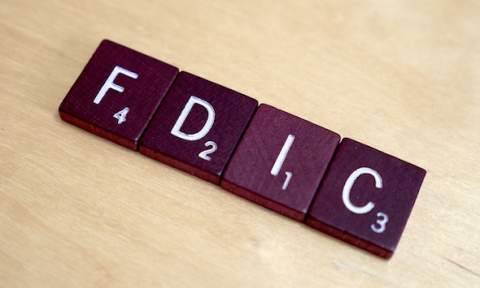Web of Debt / Op-Ed
Published: Monday 14 April 2014
Fraud is grounds for rescission
(terminating the contract) without paying penalties, potentially saving
taxpayers enormous sums in fees for swap deals that are crippling
cities, universities and other public entities across the state.
Taxpayers are paying billions of dollars for a swindle
pulled off by the world’s biggest banks, using a form of derivative
called interest-rate swaps; and the Federal Deposit Insurance
Corporation has now joined a chorus of litigants suing over it. According to an SEIU report:
Derivatives . . . have turned into a windfall for banks and a nightmare for taxpayers. . . . While banks are still collecting fixed rates of 3 to 6 percent, they are now regularly paying public entities as little as a tenth of one percent on the outstanding bonds, with rates expected to remain low in the future. Over the life of the deals, banks are now projected to collect billions more than they pay state and local governments – an outcome which amounts to a second bailout for banks, this one paid directly out of state and local budgets.
It is not just that local governments, universities and
pension funds made a bad bet on these swaps. The game itself was rigged,
as explained below. The FDIC is now suing in civil court for damages
and punitive damages, a lead that other injured local governments and
agencies would be well-advised to follow. But they need to hurry,
because time on the statute of limitations is running out.
The Largest Cartel in World History
On March 14, 2014, the FDIC filed suit for LIBOR-rigging
against sixteen of the world’s largest banks – including the three
largest US banks (JPMorgan Chase, Bank of America, and Citigroup), the
three largest UK banks, the largest German bank, the largest Japanese
bank, and several of the largest Swiss banks. Bill Black, professor of
law and economics and a former bank fraud investigator, calls them “the largest cartel in world history, by at least three and probably four orders of magnitude.”
LIBOR (the London Interbank Offering Rate) is the
benchmark rate by which banks themselves can borrow. It is a crucial
rate involved in hundreds of trillions of dollars in derivative trades,
and it is set by these sixteen megabanks privately and in secret.
Interest rate swaps are now a $426 trillion business.
That’s trillion with a “t” – about seven times the gross domestic
product of all the countries in the world combined. According to the
Office of the Comptroller of the Currency, in 2012 US banks held $183.7
trillion in interest-rate contracts, with only four firms representing
93% of total derivative holdings; and three of the four were JPMorgan
Chase, Citigroup, and Bank of America, the US banks being sued by the
FDIC over manipulation of LIBOR.
Lawsuits over LIBOR-rigging have been in the works for
years, and regulators have scored some very impressive regulatory
settlements. But so far, civil actions for damages have been unproductive for the plaintiffs. The FDIC is therefore pursuing another tack.
The Sting
Interest-rate swaps are sold to parties who have taken out
loans at variable interest rates, as insurance against rising rates.
The most common swap is one where counterparty A (a university,
municipal government, etc.) pays a fixed rate to counterparty B (the
bank), while receiving from B a floating rate indexed to a reference
rate such as LIBOR. If interest rates go up, the municipality gets paid
more on the swap contract, offsetting its rising borrowing costs. If
interest rates go down, the municipality owes money to the bank on the
swap, but that extra charge is offset by the falling interest rate on
its variable rate loan. The result is to fix borrowing costs at the
lower variable rate.
At least, that is how it’s supposed to work. The catch is
that the swap is a separate financial agreement – essentially an ongoing
bet on interest rates. The borrower owesboth the interest onits variable rate loan and what it must pay out on this separate swap deal. And the benchmarks for the two rates don’t necessarily track each other. As explained by Stephen Gandel on CNN Money:
The rates on the debt were based on something called the Sifma municipal bond index, which is named after the industry group that maintains the index and tracks muni bonds. And that’s what municipalities should have bought swaps based on.Instead, Wall Street sold municipalities Libor swaps, which were easier to trade and [were] quickly becoming a gravy train for the banks.

In 2008 and 2009, Libor rates, in general, fell much faster than the Sifma rate. At times, the rates even went in different directions. During the height of the financial crisis, Sifma rates spiked. Libor rates, though, continued to drop. The result was that the cost of the swaps that municipalities had taken out jumped in price at the same time that their borrowing costs went up, which was exactly the opposite of how the swaps were supposed to work.
The two rates had decoupled, and it was chiefly due to manipulation. As noted in the SEUI report:
[T]here is . . . mounting evidence that it is no accident that these deals have gone so badly, so quickly for state and local governments. Ongoing investigations by the U.S. Department of Justice and the California, Florida, and Connecticut Attorneys General implicate nearly every major bank in a nationwide conspiracy to rig bids and drive up the fixed rates state and local governments pay on their derivative contracts.
Changing the Focus to Fraud
Suits to recover damages for collusion, antitrust
violations and racketeering (RICO), however, have so far failed. In
March 2013, SDNY Judge Naomi Reece Buchwalddismissed antitrust and RICO claims brought
by investors and traders in actions consolidated in her court, on the
ground that the plaintiffs lacked standing to bring the claims. She held
that the rate-setting banks’ actions did not affect competition,
because those banks were not in competition with one another with
respect to LIBOR rate-setting; and that “the alleged collusion occurred
in an arena in which defendants never did and never were intended to
compete.”
Okay, the defendants weren’t competing with each other. They were colluding with
each other, in order to unfairly compete with the rest of the financial
world – local banks, credit unions, and the state and local governments
they lured into being counterparties to their rigged swaps. The SDNY
ruling is on appeal to the Second Circuit.
In the meantime, the FDIC is taking another approach. Its
24-count complaint does include antitrust claims, but the emphasis is on
damages for fraud and conspiring to keep the LIBOR rate low to enrich
the banks. The FDIC is not the first to bring such claims, but its
massive suit adds considerable weight to the approach.
Why would keeping interest rates low enrich the rate-setting banks? Don’t they make more money if interest rates are high?
The answer is no. Unlike most banks, they make most of
their money not from ordinary commercial loans but from interest rate
swaps. The FDIC suit seeks to recover losses caused to 38 US banking
institutions that did make their profits from ordinary business and
consumer loans – banks that failed during the financial crisis and were
taken over by the FDIC. They include Washington Mutual, the largest bank
failure in US history. Since the FDIC had to cover the deposits of
these failed banks, it clearly has standing to recover damages, and
maybe punitive damages, if intentional fraud is proved.
The Key Role of the Federal Reserve
The rate-rigging banks have been caught red-handed, but
the greater manipulation of interest rates was done by the Federal
Reserve itself. The Fed aggressively drove down interest rates to save
the big banks and spur economic recovery after the financial collapse.
In the fall of 2008, it dropped the prime rate (the rate at which banks
borrow from each other) nearly to zero.
This gross manipulation of interest rates was a giant
windfall for the major derivative banks. Indeed, the Fed has been called
a tool of the global banking cartel. It is composed of 12 branches, all
of which are 100% owned by the private banks in their districts; and
the Federal Reserve Bank of New York has always been the most important by far of these regional Fed banks. New York, of course is where Wall Street is located.
LIBOR is set in London; but as Simon Johnson observed in a New York Times article titled The Federal Reserve and the LIBOR Scandal,
the Fed has jurisdiction whenever the “safety and soundness” of the US
financial system is at stake. The scandal, he writes, “involves
egregious, flagrant criminal conduct, with traders caught red-handed in
e-mails and on tape.” He concludes:
This could even become a “tobacco moment,” in which an industry is forced to acknowledge its practices have been harmful – and enters into a long-term agreement that changes those practices and provides continuing financial compensation.
Bill Black concurs, stating, “Our system is completely
rotten. All of the largest banks are involved—eagerly engaged in this
fraud for years, covering it up.” The system needs a complete overhaul.
In the meantime, if the FDIC can bring a civil action for
breach of contract and fraud, so can state and local governments,
universities, and pension funds. The possibilities this opens up for
California (where I’m currently running for State Treasurer) are huge.
Fraud is grounds for rescission (terminating the contract) without
paying penalties, potentially saving taxpayers enormous sums in fees for
swap deals that are crippling cities, universities and other public
entities across the state. Fraud is also grounds for punitive damages,
something an outraged jury might be inclined to impose. My next post
will explore the possibilities for California in more detail. Stay
tuned.




No comments:
Post a Comment